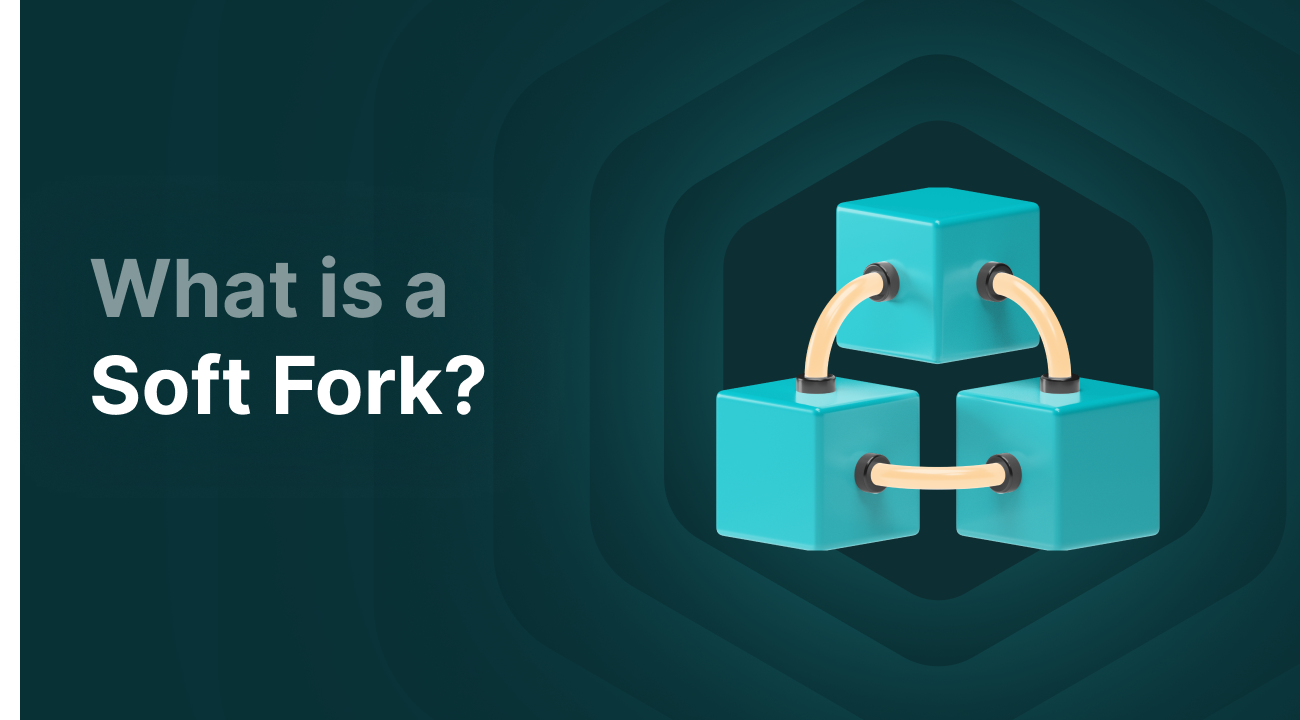Soft Forks Explained

What is a soft fork?
A soft fork is an upgrade to the blockchain that is backwards compatible. Sounds technical, but it simply means that older nodes (computers running the blockchain but not updated) still see the new blocks as valid. The new rules are stricter, but not so strict that old systems get confused.
Key Takeaways
- A soft fork is a blockchain update that is backwards compatible; old nodes keep working.
- No new coin or chain is created as long as the majority of miners follow the new rules.
- It’s a safe way to add features or make the network more efficient.
- A well-known example is the SegWit update for Bitcoin, which increased block size and made transactions faster and cheaper.
A soft fork example:
Imagine you’re playing a card game with a group of friends. Everyone knows the rules and follows them. One day, some friends suggest changing the game a bit. One friend suggests no cards higher than 10 should be played, but the rest of the game stays exactly the same.
You all decide that some (not everyone) will follow this new rule. But that’s no problem, because players who do follow the new rule can still play with the rest. They just don’t play cards higher than 10, while others sometimes still do.
As long as the majority sticks to the new rule, the game changes gradually. The old players barely notice, but the rules have been updated without breaking the whole game.
That’s a soft fork: you change the rules while old participants can still use the usual rules. So there’s no chaos, no network split, and the network keeps running as normal. A good example of this is the Bitcoin SegWit update (more about
Why do a soft fork?
A soft fork is a handy way to improve or adjust something without splitting the entire blockchain like with a hard fork. Some reasons for a soft fork:
- Adding new features
- Making the blockchain more secure
- Enabling smarter or faster transactions
- Improving the current blockchain
Important:
Not everyone needs to join in. If a majority of miners (those who create and validate blocks) switch to the new rules, the network keeps running and old nodes remain.
How does it work in practice?
New transaction types can often be added via a soft fork. A good example is Pay-to-Script-Hash (P2SH), introduced in Bitcoin. For older software, this just looked like a standard “pay to anyone” transaction. But for those who knew the new rules, there was much more logic behind it. Pretty smart, right?
As long as most miners follow the new rules, blocks without those rules are created less often. So the network naturally gets used to the soft fork.
The most famous soft fork: SegWit
The SegWit update in Bitcoin (short for Segregated Witness) is probably the most famous soft fork ever. Bitcoin had struggled for years with a scaling problem: too few transactions fit into one block (max 1MB). SegWit changed that by storing signatures (which take up a lot of space) outside the block structure, effectively allowing blocks to process 4MB.
More space = more transactions = lower fees = faster confirmations. So basically, the network got faster. Even though many saw this as a good thing, some weren’t happy about it. Especially miners in China didn’t fully trust it and refused to update. This caused a kind of “split”: some miners used SegWit, others didn’t.
SegWit Adoption Ratio
Early 2021, about 50-60% of miners were on SegWit. Not enough for a full switch. But when China banned mining in 2021, a large part of the “old guard” disappeared. Adoption shot up to almost 80%. So the soft fork slowly but surely succeeded. The soft fork was successfully implemented.
What if things go wrong?
A soft fork is less risky than a hard fork, but it can still go wrong. For example, if not enough miners join in. Or if users update software but later it turns out most miners stay on the old version. That causes confusion or even a temporary network split. Also, once a soft fork is in place, you can’t just undo it. You’d need a hard fork for that.
Difference between hard fork and soft fork
Final thoughts
A soft fork is a smart way to improve blockchains and add new features without messing everything up. It’s an upgrade that old software still understands as long as a big group of miners participates. This way, features get added, bugs get fixed, and transactions become more efficient.
The best example is Bitcoin’s SegWit update, which was gradually accepted widely. No new coin, no big fight, just a step forward.
Soft forks might not be as flashy as hard forks, but they keep the network stable and secure. And that’s just as important. When a completely new blockchain is created, we call that a hard fork.




